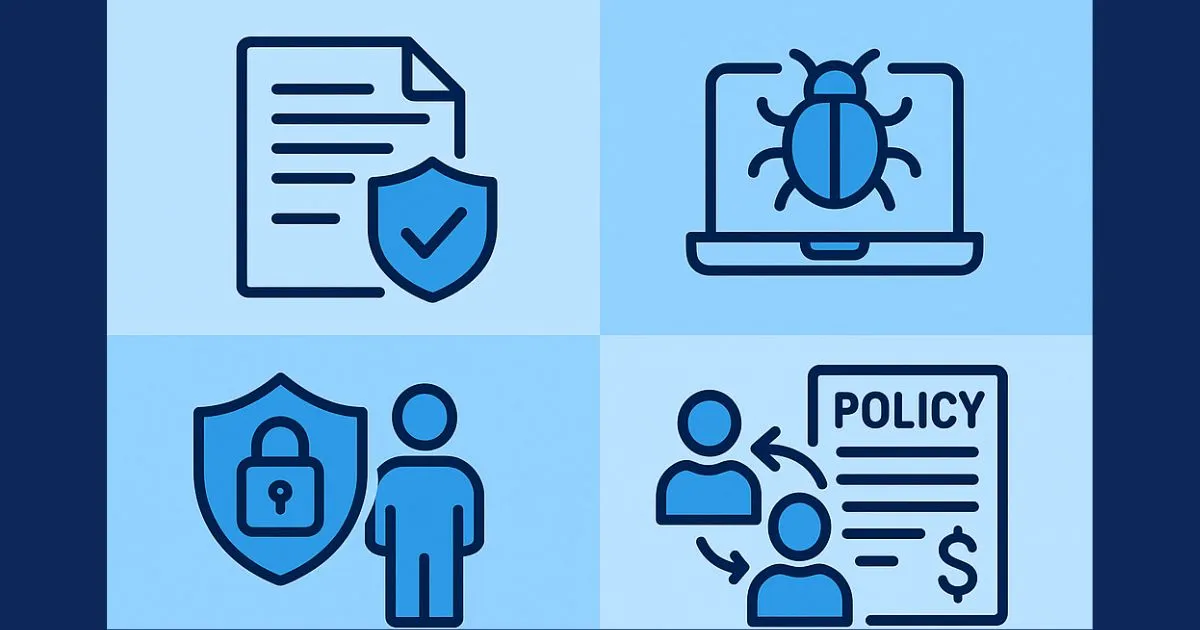Powerful Cyber Insurance Examples for Business Owners
In today’s digital landscape, businesses face a myriad of cyber threats that can compromise sensitive data and disrupt operations. As a business owner, understanding the importance of protecting your digital assets is crucial.
Having the right cyber insurance coverage can provide a safety net against these threats, helping you to mitigate potential losses and ensure business continuity. This article will explore cyber insurance examples and highlight the benefits of having adequate coverage.
Table of Contents
Cyber Insurance Examples You Should Know
Key Takeaways
- Understanding the importance of cyber insurance in today’s digital age.
- Identifying the benefits of having adequate cyber insurance coverage.
- Exploring real-world examples of cyber insurance in action.
- Learning how to mitigate potential cyber threats and losses.
- Discovering the role of cyber insurance in ensuring business continuity.
Common Cyber Insurance Examples You Should Know
With cyber threats on the rise, it’s essential to explore real-world examples of cyber insurance in action to protect your business. Cyber insurance is designed to help businesses manage and mitigate the risks associated with cyberattacks and data breaches. By understanding how cyber insurance works in different scenarios, you can better appreciate its value in safeguarding your organization’s financial and reputational well-being.
Data Breach Response and Recovery
A data breach can be catastrophic for any business, resulting in the unauthorized access or theft of sensitive customer information. Cyber insurance can help cover the costs associated with responding to a data breach, including notifying affected parties, providing credit monitoring services, and managing public relations to mitigate reputational damage. For instance, if your business experiences a breach, cyber insurance can help pay for forensic investigations to determine the cause and scope of the breach, as well as legal fees associated with defending against related lawsuits.
According to a recent study, the average cost of a data breach is around $4.35 million. Cyber insurance can significantly reduce this financial burden by covering expenses related to breach response and recovery.
Ransomware Payment and System Restoration
Ransomware attacks involve malware that encrypts a victim’s files or locks their systems, demanding a ransom in exchange for the decryption key or unlock code. Cyber insurance can help businesses respond to ransomware attacks by covering the cost of ransom payments, as well as expenses related to restoring systems and data from backups. Additionally, cyber insurance may cover the costs of hiring experts to negotiate with attackers and restore systems.
“Ransomware attacks are on the rise, and having the right insurance coverage can be the difference between a minor disruption and a major disaster.”
— Cybersecurity Expert, Forbes
Social Engineering Fraud Protection
Social engineering fraud involves tricking employees into revealing confidential information or making financial transfers to fraudulent accounts through manipulation and deception. Cyber insurance can protect businesses against social engineering fraud by covering financial losses resulting from such scams. This type of coverage is particularly important as social engineering tactics become increasingly sophisticated and difficult to detect.
| Cyber Insurance Coverage | Description | Benefits |
| Data Breach Response | Covers costs associated with responding to a data breach | Helps manage financial and reputational impacts |
| Ransomware Payment | Covers ransom payments and system restoration costs | Reduces financial loss and downtime |
| Social Engineering Fraud Protection | Covers financial losses due to social engineering scams | Protects against sophisticated cyber threats |
By understanding these common cyber insurance examples, you can better appreciate the importance of having robust cyber insurance coverage to protect your business from the ever-evolving landscape of cyber threats.
Key Cyber Insurance Terms and Coverage Options
As you navigate the complex world of cyber insurance, understanding key terms and coverage options becomes crucial. Cyber insurance is designed to protect your business from various cyber threats, but the terminology and coverage details can be overwhelming without proper guidance.
First-Party vs. Third-Party Coverage
Cyber insurance policies generally include two main types of protection: first-party and third-party coverage. First-party coverage protects your business directly by covering costs associated with data breaches, such as notification expenses, forensic analysis, and restoration of data. On the other hand, third-party coverage is designed to protect your business in case you are held liable for a cyber event that affects your customers or partners, covering legal fees, settlements, and other related costs.
| Coverage Type | Description | Example Costs Covered |
| First-Party Coverage | Direct protection for your business | Data breach notification, forensic analysis, data restoration |
| Third-Party Coverage | Protection against liability for cyber events affecting others | Legal fees, settlements, regulatory fines |
Important Policy Definitions
It’s essential to understand the definitions outlined in your cyber insurance policy.
Terms such as “data breach,” “cyber attack,” and “network interruption” are defined within the policy and can significantly impact your coverage. It’s essential to review these definitions to ensure you understand what is covered and what is not.
Coverage Limits and Deductibles
Cyber insurance policies come with coverage limits and deductibles. Coverage limits are the maximum amounts your insurer will pay for a covered loss, while deductibles are the amounts you must pay out of pocket before your insurance kicks in. Understanding these elements is crucial for managing your cyber risk effectively and ensuring you have adequate protection.
By grasping these key cyber insurance terms and coverage options, you can make informed decisions about your cyber protection, ensuring your business is adequately safeguarded against the ever-evolving landscape of cyber threats.
Real-World Cyber Insurance Claims Examples
With the rise in cyberattacks, real-world examples of cyber insurance claims can provide valuable insights into its benefits. Cyber insurance is designed to help businesses manage and recover from cyber incidents, and examining actual claims can demonstrate its practical value.
Small Business Data Breach Scenario
A small e-commerce business experienced a data breach when a hacker gained access to its customer database, compromising sensitive information. The business had a cyber insurance policy that covered data breach response costs, including notification expenses, credit monitoring services, and legal fees. The insurer helped the business respond to the breach, minimizing reputational damage and financial loss.
Healthcare Organization Ransomware Case
A healthcare organization fell victim to a ransomware attack, resulting in the encryption of critical patient data. The organization’s cyber insurance policy covered the ransom payment, as well as the costs associated with restoring systems and data from backups. The insurer also provided access to cybersecurity experts who helped improve the organization’s defenses against future attacks.







